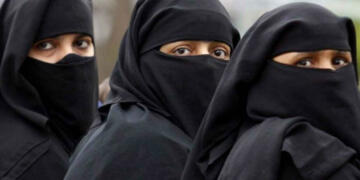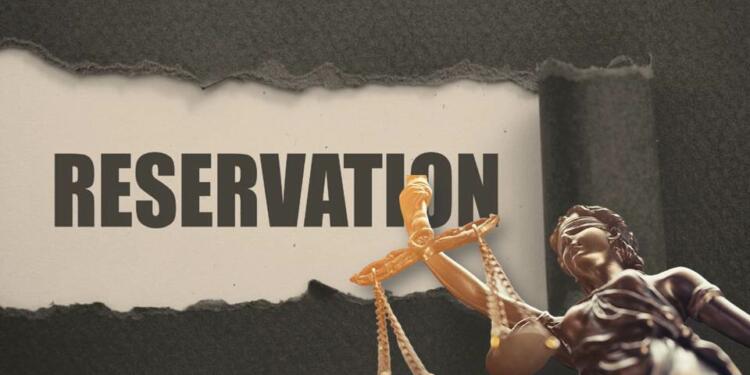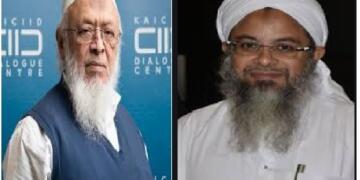“Two wrongs don’t make a right.” The very affirmative actions in the form of caste-based reservations have started to pose a surmountable challenge to the concept of meritocracy. For petty politics, the concept of giving special privileges to the socially backward classes was cemented without properly analysing the outcomes of it. Justice JB Pardiwala, while delivering his judgement on the historic EWS reservation, pointed out this very fact.
Justice Pardiwala : : Reservation should not continue for indefinite time so that it becomes a vested interest. Finally I uphold the #EWS amendment.
(With this, 4 judges out of 5 have so far upheld the 103rd amendment. J Ravindra Bhat's pronouncement left)
— Live Law (@LiveLawIndia) November 7, 2022
The Supreme Court upheld “economic-based” reservation
On November 7, 2022, the Supreme Court delivered a split 3:2 verdict in favour of the 103rd Constitutional Amendment. With this, the Supreme Court has vindicated the fact that economic conditions are a viable classification for granting reservations.
Read More: Reservation for all is reservation for none; that’s the direction we seem to be moving in.
This all gained traction after the 1991 liberalization. The society started giving more weight to wealth than the prevalent social stratification, if any. With an open market, economic disparity became the major ground for discrimination. This led to widespread demand to make economic disparity a criterion for reservation.
Without proper economic resources, the citizens face constraints in availing the basic amenities needed for a dignified life. Further, it is an established fact that education is one of the best ways to eradicate discriminatory practises and evils in society.
The timeless debate on the effectiveness of caste-based reservation
Caste-based reservation is an old concept that predates Independent India. Evidently, the reservation for non-Brahmins existed in pre-independence India as well. In 1902, Rajarshi Shahu allocated half of his land to the backward communities. Visionary academician and Father of Modern Indian Engineering, M. Visvesvaraya, foresaw the limitations of this caste-based reservation model. He opposed the move in Mysore.
Following the policy of “divide and rule,” the British introduced the idea of community reservation in various Government of India Acts, the Simon Commission, and round table conferences.
Also Read: Modi government’s lateral entry programme starts the end of caste-based reservation system
“Political” and “elite” hijacking of the social welfare push
However, after Independence, India abolished the caste system in letter. The Supreme Court in the famous Champakam Dorairajan case struck down the caste-based reservation, calling it “ultra-vires.” But to further his political interests, former PM JL Nehru introduced clause 4 in Article 15 through the first amendment.
The introduction of the word “class” in Article 15(4) became the groundwork for more and more reservations in the future. Meanwhile, in politics, the limit of a 10-year term for reservations kept increasing. It has been continuing ever since.
Isn’t it ironic that more and more classes or communities have preferred to enrol them in backward classes? Was it not supposed to eradicate the menace of social ostracization of communities, bring them into the mainstream, and create a feeling of equality among all classes? If that is the case, why would more communities take pride in and fight for claiming to be socially ostracised and be seen as mainstream players?
Also read: Justice DY Chandrachud gets flak for a statement about “obvious upper-caste privilege”
The affirmative action system has been in place for 75 years, but its positive impact has never been quantified in numbers. Simply put, is there data to support the effectiveness of this caste-based system? Is there any rate at which the caste-based system has done its intended purpose and removed the shackles of social ostracization from X number of families, Y number of persons, or Z percentage of such communities that have been brought to the mainstream, abolishing the ostracization?
A famous case involving IAS officer Tina Dabi and her family highlights the point that certain elites have undemocratically usurped the rights meant for the ostracised communities. Such cases highlight the need for framing either a “One Family, One Reservation” policy or mulling the idea of introducing creamy layers to avoid duplicity in claiming benefits meant for the “backward classes.”
Rather than becoming a tool to undo the wrongs of the past, the undemocratic usage of the special privileges defeated the very purpose of the system. The system itself started to become an oppressor against merit. It is high time that the caste-based reservation system is abolished or undergoes radical reform, maybe along the lines stated above.
It has to be ensured that the special provisions framed to provide a level playing field for the socially lacking classes do not become hostage to a few “elites” of the community. The affirmative action system has to be reformed before it ends up as a tool of mere virtue signalling. Rather than meet out justice to every person, it ends up becoming a tool for the representation of surnames.
Support TFI:
Support us to strengthen the ‘Right’ ideology of cultural nationalism by purchasing the best quality garments from TFI-STORE.COM
































